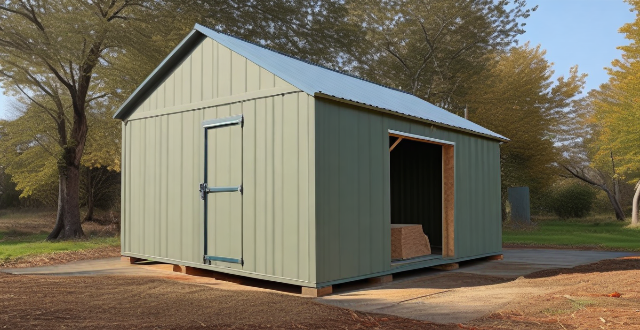The use of wind turbines in residential areas is possible and offers numerous benefits, including reduced dependence on fossil fuels and increased energy independence. However, there are challenges such as zoning laws, noise levels, and aesthetic concerns that must be considered. Economic factors like upfront costs and maintenance expenses also play a role. To successfully implement wind turbines in residential settings, homeowners should assess their site's suitability, work with professionals to plan the system, engage with the community, choose a reputable installer, and monitor the turbine's performance regularly.

Can Wind Turbines Be Used in Residential Areas?
Wind turbines have become an increasingly popular source of renewable energy, but the question remains: can they be used in residential areas? The answer is yes, with some considerations. Let's delve into the details.
Advantages of Using Wind Turbines in Residential Areas
Energy Efficiency
- Reduced Dependence on Fossil Fuels: By harnessing wind power, residents can reduce their reliance on non-renewable energy sources like coal and oil. This not only cuts down on greenhouse gas emissions but also saves money on utility bills in the long run.
- Increased Energy Independence: Homeowners who install wind turbines gain a degree of energy autonomy, as they produce their own electricity from a clean, renewable source.
Environmental Benefits
- Low Carbon Footprint: Wind turbines generate electricity without producing air pollution or greenhouse gases, making them an eco-friendly option for powering homes.
- Conservation of Natural Resources: Unlike fossil fuels that are finite resources, wind is a constantly replenished energy source that does not deplete natural resources.
Challenges and Considerations
Zoning Laws and Regulations
- Permitting Process: Before installing a wind turbine, homeowners must navigate through local zoning laws and obtain necessary permits, which can sometimes be a lengthy and complex process.
- Setback Requirements: Many municipalities have setback requirements that dictate how close a wind turbine can be to property lines or neighboring houses, potentially limiting placement options within smaller residential lots.
Noise and Visual Impact
- Noise Levels: While modern wind turbines are designed to operate quietly, they can still generate low-level noise that may be bothersome to some neighbors.
- Aesthetic Concerns: The appearance of wind turbines may not appeal to everyone, and there could be resistance from neighbors who do not wish to have such structures in their vicinity.
Economic Considerations
- Upfront Costs: Although wind turbines can save money in the long term, the initial investment can be substantial for individual homeowners.
- Maintenance Costs: Like any mechanical system, wind turbines require regular maintenance to ensure optimal performance and longevity.
Site Suitability
- Wind Speed: A minimum average wind speed is required for wind turbines to be effective. If the residential area does not have consistent winds above this threshold, the turbines will not generate enough electricity to make them worthwhile investments.
- Turbine Sizing: The size of the wind turbine should be appropriate for the available space and the anticipated energy needs of the household.
Implementing Wind Turbines in Residential Areas
To successfully incorporate wind turbines into residential settings, several steps should be followed:
1. Assessment: Conduct a site assessment to determine if your property is suitable for a wind turbine based on factors like wind speed and available space.
2. Planning: Work with professionals to design a system that meets your energy needs and complies with local regulations.
3. Community Engagement: Engage with neighbors and community members to address concerns about noise, aesthetics, and other potential issues proactively.
4. Installation: Choose a reputable installer and ensure that all safety standards are met during the installation process.
5. Monitoring: After installation, monitor the performance of the wind turbine regularly and perform necessary maintenance to keep it functioning efficiently.
In conclusion, while using wind turbines in residential areas is feasible, it requires careful planning, consideration of various factors, and compliance with local regulations. By taking these steps, homeowners can harness the power of wind energy to reduce their environmental impact and increase their energy independence.